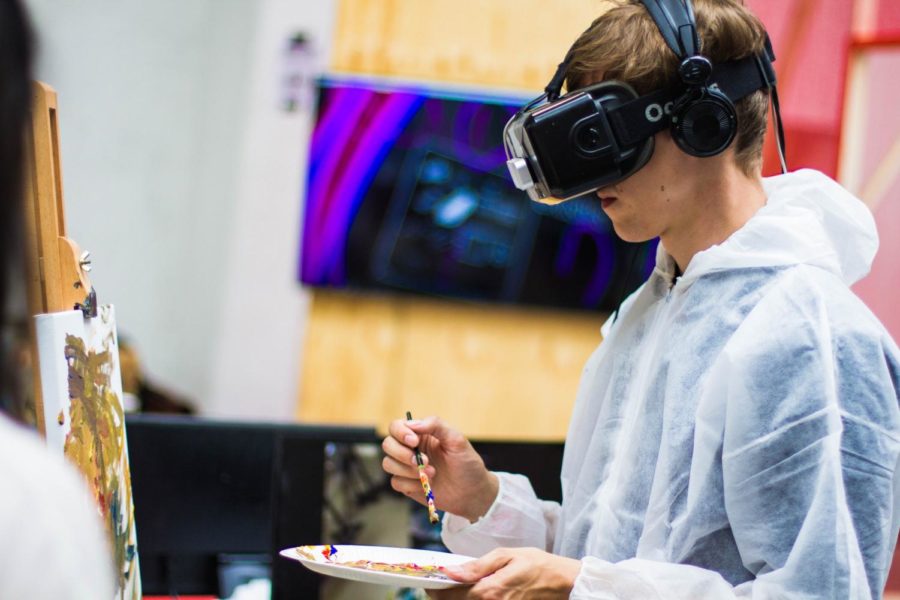Virtual Reality: More than just a game
There has been a recent surge in the virtual reality market. Virtual reality, popularly known as VR, is a type of technology designed to replicate the human body’s perception of reality. This involves sight, using a head mounted module with different screens per eye to replicate the human eyes being able to perceive the world as a third dimensional space.
Sound is replicated through the use of high quality headphones, giving off a sense that there is a world beyond what one can see with the eyes. Smell and taste are not able to be recreated yet, although touch is being developed, with vest and gloves replicating the feeling of getting shot or smacking a hand against a wall.
In the nineties, VR gained significant following, mostly with the release of Nintendo’s Virtual Boy. While pre-release marketing and anticipation was high, the low price point and technology available at the time meant the experience was poor and ultimately detrimental to the player’s health, as nausea and head pains were relatively common. Even if the health problems were overlooked, most of the products on the Virtual Boy were shallow and not enjoyable; adding to that was the monochromatic red screen which was unpleasant to look at. It also required a stand and completely limited user movement, making the Virtual Boy hard to use.
Skipping forward to modern times, Oculus VR, an American technology company, was founded in July 2012. Before the foundation of the company, the founder launched a KickStarter campaign for the product, the Oculus Rift.
The importance of the Oculus Rift in the VR industry cannot be understated. Most, if not all, innovations in VR come from this product. The Oculus Rift was able to give an extremely high frame rate to each screen, developing near seamless motion-tracking to actually create movement in games, and creating the first high definition display for consumers.
Moving forward to present day, many improvements have been made to VR and now there are many competitors, Oculus being among them. The Oculus Rift is being sold for $400 retail. Their main competitor is the HTC Vive, widely regarded as the best VR headset, which is sold for $600. Different niches within the industry have begun to rise as well; mobile phones are being turned into VR machines with a few add-ons, for instance. Samsung Gear VR is a headset designed to hold Samsung phones and deliver a decent, but not outstanding, virtual experience. It is available for $100 in select stores. Other products similar to the Samsung Gear VR include the Google Daydream View and Google Cardboard for $99 and $15 respectively. The Armijo library has a set of Google Cardboard that students will be testing on Tuesday, February 20.
VR became popular around early 2013 due to the Oculus Rift. Before then, VR was more of a niche concept rather than a realized technology. It has become popular due to the presence of video games designed for the platform. Horror games are particularly popular due to sight and sound being the main senses designated for fear. Various ways to consume media has been created, such as watching movies in a recreation of a cinema theater rather than TV.
Specialized media such as videos and movies have been produced to allow the viewer to look around during the movie using a 360 degree camera. Recently, socially-interactive programs have been created, where users can walk around a simulated world using an avatar and talk to other players.
VR was created to allow a person to explore a virtual world that could not be replicated in the real world. It has been used by older people who lack the energy to experience the real deal. One such example comes from a post on Reddit, where a retired plane pilot used VR to relive his younger days. For a more youthful audience, the social aspect of talking with people as a fictional character is highly appealing.
Exploring a new world, interacting with others virtually face to face, and being able to relive one’s glory days are all appeals that draw people to VR. While virtual reality is an expensive hobby, the enjoyment and doorways opened by it are tremendous. Those interested in social media and talking with other people and have the money to burn might consider investing into a personal computer with either an Oculus Rift or HTC Vive. Those with a tighter budget or less demand for perfection might choose the cheaper phone VR headsets or Google Cardboard.



